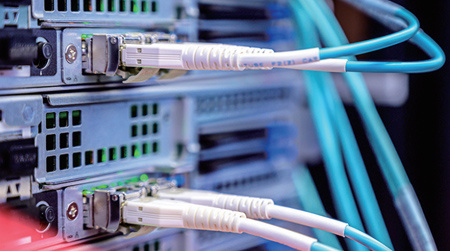29
2025
-
06
Unlocking the Potential of Fiber Optic Splitters in Everyday Applications
Introduction to Fiber Optic Splitters
In today’s fast-paced digital world, connectivity is king. With the rise of high-speed internet and data transmission, one unsung hero is making waves behind the scenes: the Fiber Optic Splitter. This nifty device plays a pivotal role in distributing data, much like a traffic cop directing cars at a busy intersection. But what exactly are fiber optic splitters, and where do they fit into our daily lives? Let’s dive in!
What Is a Fiber Optic Splitter?
Simply put, a fiber optic splitter is a device that divides the optical signal from one fiber optic cable into multiple outputs. Think of it as a power strip for your internet connection, allowing multiple users to share a single source without compromising speed or quality. This device is crucial in both residential and commercial settings, ensuring that everyone stays connected.
Applications of Fiber Optic Splitters
Now, let’s explore some of the most common applications of the fiber optic splitter:
1. Telecommunications
Telecommunication companies rely heavily on fiber optic splitters to deliver high-speed internet to homes and businesses. By splitting the signal, providers can serve multiple households from a single fiber line, making it an efficient solution for urban areas.
2. Data Centers
In data centers, where speed and efficiency are crucial, fiber optic splitters help manage vast amounts of data traffic. They ensure that servers can communicate seamlessly, reducing latency and boosting overall performance.
3. Broadcasting
For television and radio broadcasting, maintaining signal clarity is vital. Fiber optic splitters enable broadcasters to distribute high-quality audio and video signals to various locations without any loss in quality.
4. Security Systems
Ever wondered how security cameras transmit footage back to a central hub? You guessed it! Fiber optic splitters play a key role in connecting multiple cameras to a single monitoring system, ensuring that every corner is covered.
Why Choose Fiber Optic Splitters?
So, why opt for fiber optic splitters over traditional copper wiring? Well, there are a few compelling reasons:
- Higher Bandwidth: Fiber optics can handle much more data than copper, making them perfect for high-demand environments.
- Longer Distances: Fiber optic signals can travel longer distances without losing strength, reducing the need for repeaters.
- Less Interference: Fiber optic cables are immune to electromagnetic interference, ensuring a stable connection.
Choosing the Right Fiber Optic Splitter
When it comes to selecting a fiber optic splitter, several factors come into play:
- Ratio: Splitters come in various ratios (e.g., 1:2, 1:4, 1:8). Choose one that fits your needs.
- Type: There are fused biconic taper (FBT) splitters and planar lightwave circuit (PLC) splitters, each with their own advantages.
- Durability: Look for a splitter that can withstand your environment, especially if it's for outdoor use.
Conclusion
In conclusion, the Fiber Optic Splitter is more than just a simple device; it’s a vital component in the infrastructure of our modern communication systems. Whether you’re streaming your favorite show, working remotely, or ensuring your security system is robust, fiber optic splitters are quietly at work, making it all possible. So, next time you enjoy a seamless internet experience, spare a thought for these unsung heroes!
Relevant news
CONTACT US
Add: No.1 Yonghe Third Road, Industrial Functional Zone, Chengdong Street, Yueqing City, Wenzhou City, Zhejiang Province
Tel: +86-577-62315998
Wechat : +86-15067871794
Fax: +86-577-62328331
E-mail: bonnie.chen@ouyahua.com











